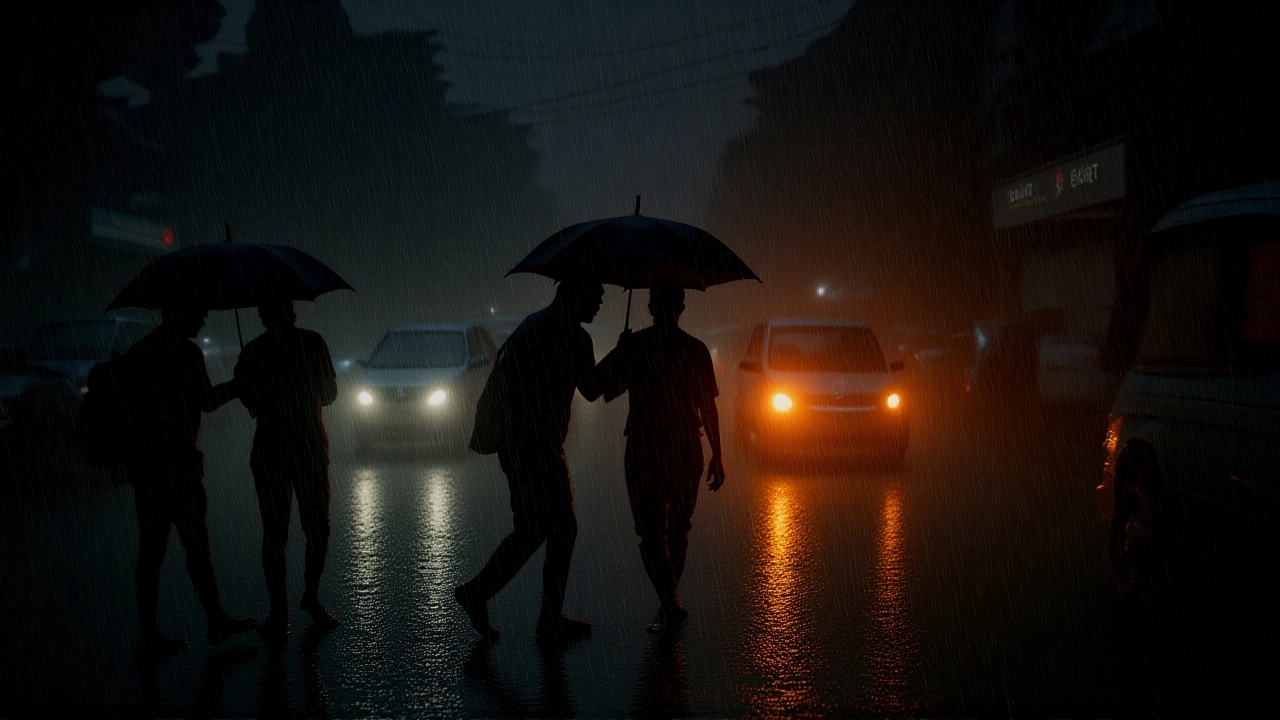Gujarat Heavy Rainfall – What’s Happening and How to Stay Safe
Heavy rain has become a regular visitor in Gujarat during the monsoon, and it’s not just a splash of water. Sudden downpours can flood roads, damage homes, and cause power cuts. If you live in Ahmedabad, Surat, Rajkot or any coastal town, you’ve probably watched the sky turn grey and wondered when it will stop. This guide breaks down what’s causing the heavy rains, what you can expect, and what you should do right now to protect yourself and your family.
Why Gujarat Is Seeing More Intense Showers
Scientists point to a mix of local and global factors. The Arabian Sea warms up faster than usual, feeding more moisture into the monsoon winds. At the same time, climate‑change patterns are shifting the timing of rain spikes, so storms that used to be brief are lingering longer. In practical terms, that means more water hitting the ground in a short period, and the city’s drainage system often can’t keep up.
Real‑World Impacts You’ll Notice
When the rain hits hard, the first thing you’ll see is water pooling on streets. In low‑lying neighborhoods, even a few centimeters can turn a road into a river. Flooded gutters may overflow, causing water to seep into basements and ground‑floor rooms. Power outages are common because water can short out electrical lines. For commuters, traffic snarls can double travel time, and some routes may become completely impassable.
Beyond the inconvenience, heavy rain brings health risks. Stagnant water becomes a breeding ground for mosquitoes, raising the chance of dengue or malaria. Wet walls can lead to mold, which irritates lungs and allergies. That’s why staying informed and prepared is key.
Quick Safety Checklist
1. Stay Informed: Download a reliable weather app or follow the Gujarat State Disaster Management Authority on social media. Alerts usually come with a lead time of 30‑60 minutes.
2. Secure Your Home: Check that doors and windows close tightly. If you have a basement, place sandbags or waterproof sheets around the entrance.
3. Keep Essentials Ready: A flashlight, some dry clothes, bottled water, and a first‑aid kit should be within reach. Charge your phone and keep a power bank handy.
4. Avoid Flooded Roads: Even shallow water can hide potholes or quickly become deeper. If you must drive, go slowly and keep headlights on.
5. Know Emergency Numbers: The local police, fire department, and disaster response teams have dedicated hotlines. Save them in your contacts.
Long‑Term Steps for Communities
While individual actions help, bigger changes are needed. Communities can lobby for better drainage infrastructure, such as larger culverts and regular cleaning of stormwater channels. Tree planting along riverbanks reduces runoff speed, and rainwater harvesting tanks can lessen the load on municipal systems.
Schools and workplaces should run regular drills so everyone knows the evacuation route and where to gather. Local NGOs often organize free workshops on flood‑proofing homes—keep an eye out for those events.
What to Do If You’re Already Stuck in Floodwater
If you find yourself in rising water, move to higher ground immediately. Don’t try to walk through fast‑moving water—just a few inches can knock you down. If you’re inside a building and water starts entering, turn off electricity at the main switch before touching any appliances. Call for help and let rescuers know your exact location.
Remember, most injuries during heavy rain come from trying to drive or walk through unsafe conditions. Patience saves lives.
Gujarat’s monsoon will keep delivering rain, but with the right knowledge and a few simple steps, you can turn a potentially dangerous situation into a manageable one. Stay alert, prepare early, and share these tips with friends and family—together we can weather the storm safely.

